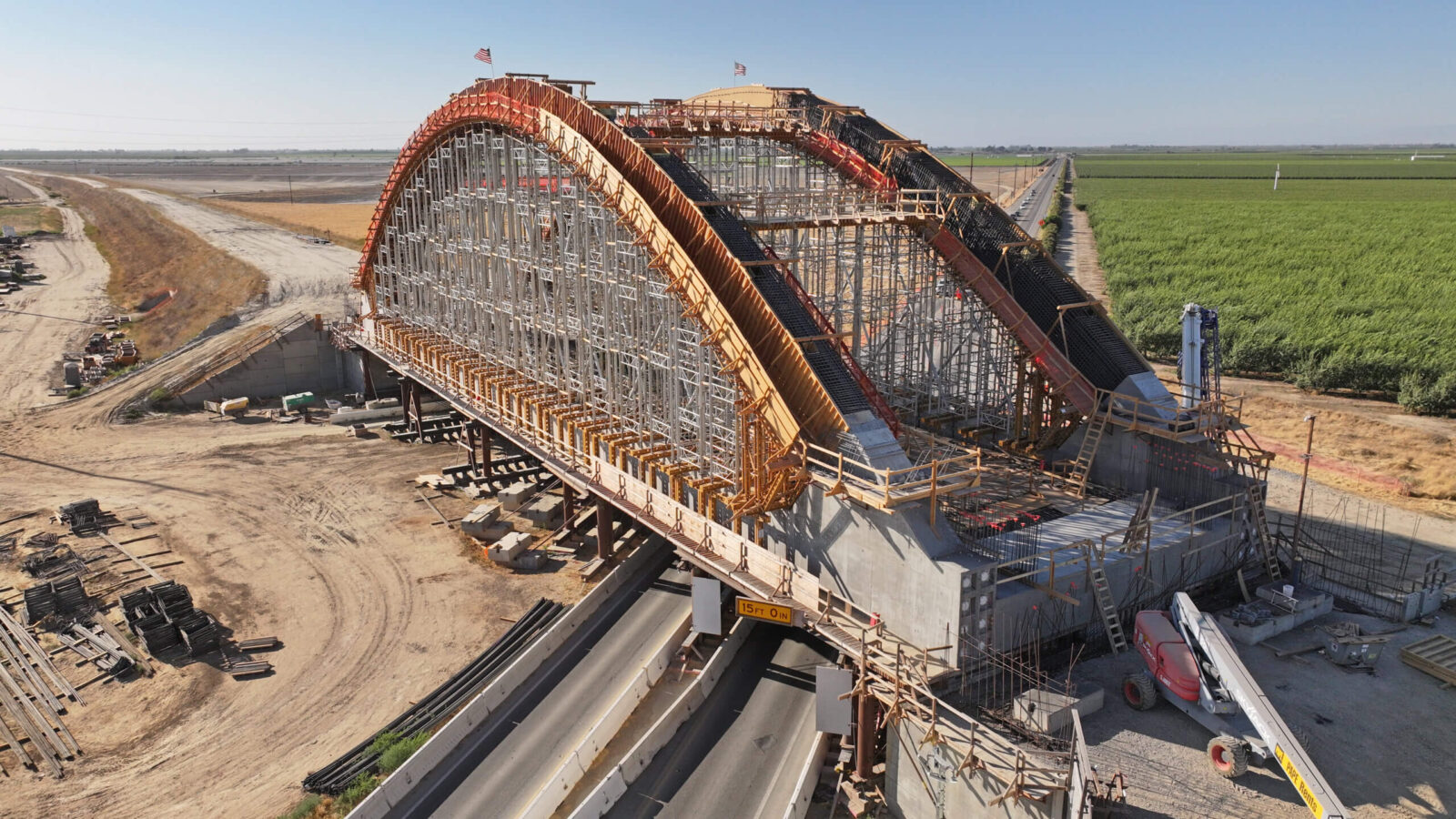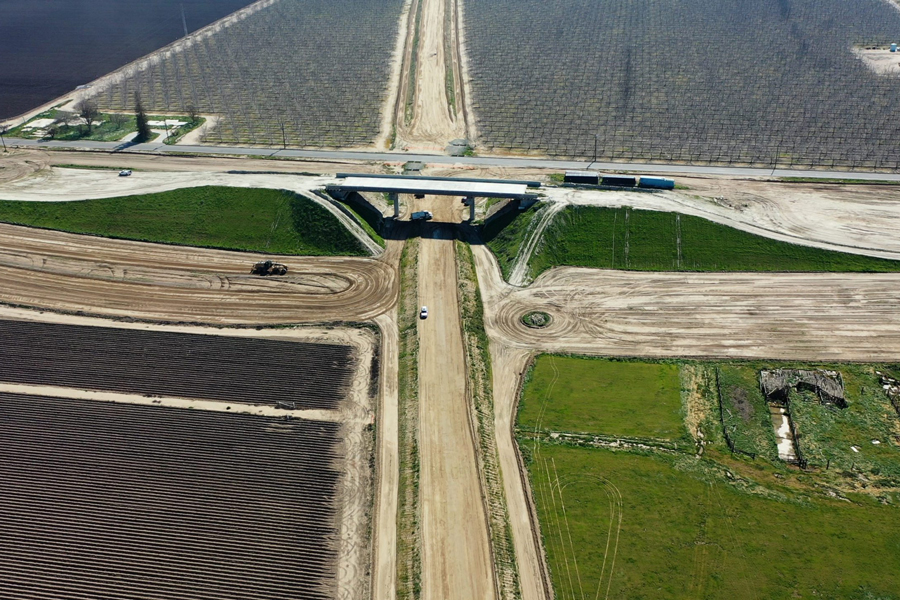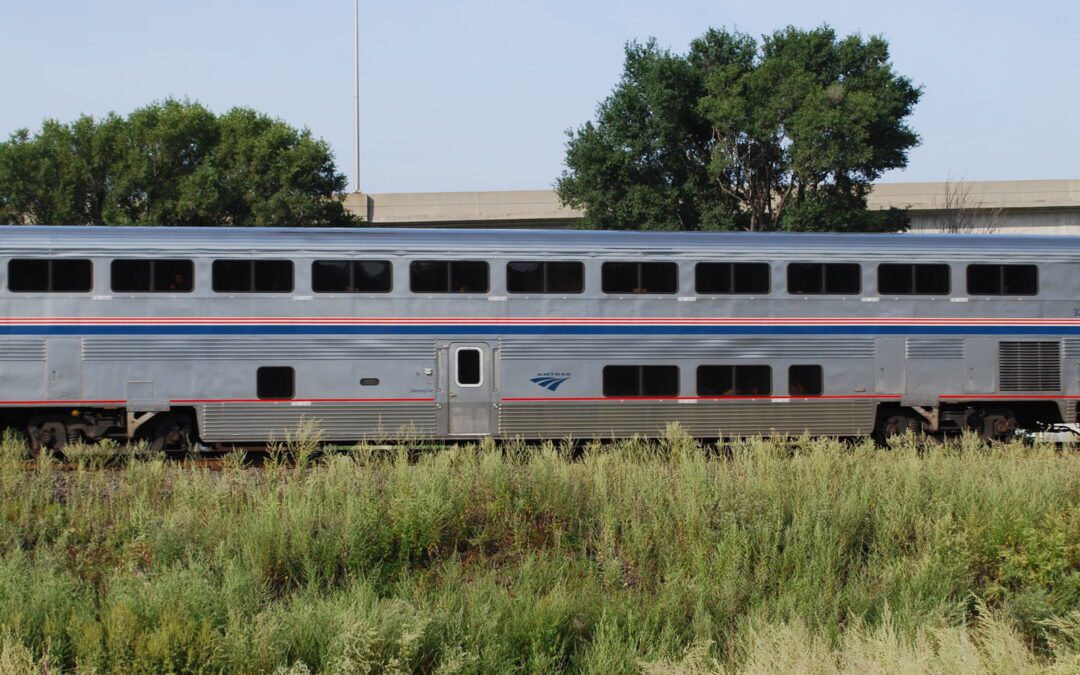California will expand and accelerate high-speed rail project with more funding and new partnerships, CEO says CEO Ian Choudri aims to accelerate and expand construction on the San Francisco - Los Angeles high-speed line in 2026, marking a major milestone in the...
Guest Post by Theo Anderson
Texas and California, America’s biggest states by population, both have massive infrastructure projects underway. You know something about California’s 500-mile high-speed line from San Francisco to Los Angeles, probably. But you likely haven’t heard about the North Houston Highway Improvement Project (NHHIP), which is reconstructing I-45N and segments of connecting freeways in Houston.
It’s interesting to compare the two projects.
California HSR is a popular punching bag for critics of both high-speed trains and California. Columnists and media outlets obsess over its costs. In a recent essay in Forbes, for example, Steve Forbes summed up years of attacks by calling it a “disgraceful boondoggle” and writing that “it’s long past time to derail this fiscal fiasco.”
By contrast, the NHHIP barely registers in national discussions. Which seems odd, since Houston’s project is far more expensive and delay-plagued than California high-speed rail. It will cost an estimated $13 billion for the 25 miles of work, or nearly $500 million per mile. The projected cost of the high-speed line from San Francisco to LA is $128 billion, or a little over $200 million per mile.
But costs aren’t the only or even most relevant way to compare the projects. Consider the value they’ll deliver (or not) when they’re finished.
This is a Critical Moment
Join thousands of members working to support families and communities with great trains.
Houston’s “highway improvement” will deliver more congestion, more crashes and fatalities, and more climate-change pollution. Because the reality is, it’s impossible to build your way out of congestion. The “induced demand” effect means that building new highways and adding lanes encourages people to drive. Which means that traffic soon returns to pre-construction levels, or worse, despite the promises and intentions of highway builders and boosters. From 1993 to 2017, for example, the population in America’s largest cities grew by 32% and freeway capacity grew by 42%—while the hours chewed up by traffic delays increased by 144%, according to a report by Transportation for America.
With more drivers using I-45, it will be even more congested and dangerous. And it’s already among the most congested and dangerous roads in America. Running from Dallas to Galveston, it ranks as the nation’s 16th deadliest road. The I-45 North Freeway section, which the NHHIP will reconstruct, is the 124th deadliest.
More cars also means more greenhouse gases. Americans aren’t transitioning to EVs as quickly as expected, but even if they were, it wouldn’t solve the environmental problems created by cars. EVs still lead to congestion; they’re still involved in crashes; and they still wreak environmental havoc—via the carbon-intensive mining needed to build the batteries, the toxins spewed by eroding tires, the parts and materials that end up in landfills, and much more.
Planting the flag of freedom
What will California high-speed rail deliver?
Fewer cars on the road, fewer injuries and deaths from crashes, and fewer greenhouse-gas emissions—for starters.
The California High-Speed Rail Authority estimates that the line will avert more than 14,000 flights and nearly 1.5 billion vehicle miles traveled, annually, in 2040. Less driving means fewer crashes and fatalities, of course, since driving is the most dangerous thing most people do on a daily basis. Forty passengers died in train accidents (including commuter trains) over the past 15 years. More than 500,000 people died in car crashes over the same timeframe. Riding a passenger train is about 17 times safer than driving.
All of which makes it especially curious that California HSR is demonized while the NHHIP—which is billions of dollars over the cost projections and will be profoundly harmful to both people and the environment—mostly escapes scrutiny.
What gives?
Novelty is part of it. When California broke ground on its line, it became the first true HSR project underway in North (or South) America. That alone makes it vulnerable. Construction projects create few news stories until something goes wrong. When the project is the only one of its kind on a continent, it’s an especially tempting target.
NHHIP, by contrast, is one of dozens of highway projects across America. In Texas alone there’s another project that’s similar to Houston’s in terms of scope and bloat—and in terms of the congestion, crashes, death, and damage it will bring. It runs through downtown Austin. One 8-mile segment will cost an estimated $4.5 billion, or more than $500 million per mile. Again, the projected cost of California HSR is a little more than $200 million per mile. Needless to say, the critics of California HSR are silent on the Austin project’s delays and cost overruns. (See the Alliance’s webinar with Megan Kimble, author of City Limits, for more on Texas highway boondoggles.)
But high-speed rail’s novelty isn’t the main source of the disparity.
The truth is that California HSR is a target for critics because it poses a genuine threat to the status quo. It was launched by a grassroots-driven ballot initiative, after all. And despite the steady attacks on it, year after year, Californians continue to support it by wide margins—62% to 38% in the most recent polling.
But change is ferociously hard. There are sunk costs to consider. The status quo is familiar, by definition, and its protectors are well-resourced, well-connected, and highly skilled at defending their turf.
As far back as 2019, Fox News and many other outlets falsely reported California HSR was dead. More recently, many others have called for its demise. Yet it survives. In fact, after years on the knife’s edge, California HSR moved beyond bare survival mode and gained some long-term stability last week, when the state’s legislature approved $1 billion in annual funding for it.
Which means that, despite everything, it’s on track to be built—and to begin modeling transportation that works for people, not against them.
That would be a dagger to the heart of the idea that travel has to be stressful, expensive, dangerous, and polluting. It would plant a flag for transportation that’s not only fast and affordable but pleasant, safe, and sustainable.
The haters—and Californians—both understand this. They grasp that, against the odds, the project could succeed in bringing true freedom to travelers across America. That truth is both the great threat—and the great promise—of California HSR.
The Latest from HSRA
Our Latest Blog Posts
Check out the latest news, updates, and high speed rail insights from our blog!





